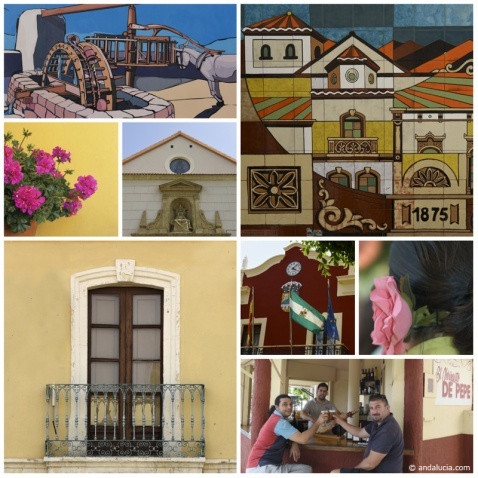
Viator, a small village on the outskirts of Almeria. |
|
VIATOR
by Saskia Mier
Viator is buzzing in October, when the popular Fiesta de la Longaniza is celebrated, coinciding with the pork slaughter season. The town has about 5,980 inhabitants.
HISTORY
The name ‘Viator’ indicates a place of transit, road or path, although some believe that the toponym Viator comes from Via Turris, ‘way to the Tower’, and refers to the farmhouse called Torreserena that was once nearby. It has been suggested that the Roman road from Cástulo to Malaca passed through here before crossing the river to follow the coast.
The town is thought to have originated during the Al-Andalus period, close to the foundation of Almería in the tenth century. With the Christian conquest of Almería in 1489, Viator remained a suburb of Almería. After the War of the Alpujarras (1568-1570), Viator was depopulated, but the repopulation was carried out in 1587 with 9 neighbours.
The segregation of Almería took place in 1835, but its municipal term was not conformed until the end of the century by a lawsuit filed by Viator before the Granada Court. In the middle of the nineteenth century, the town already had an urban structure, with many dwellings built within caves to flee from the floods of the Andarax River. The twentieth century was characterized by population decline as in the entire province of Almería. In the 1920s, the Viator military camp was built to prepare the troops for the defence of the Protectorate of Africa, due to its proximity to the conflict zone. Today, the accessibility of the province’s capital from Viator means that part of the town’s population is dedicated to the service sector, but the main activity continues to be agriculture.
THINGS TO SEE
Ayuntamiento
The Town Hall is a simple building, and appears two stories high on the outside, the lower floor on the façade being occupied by a porticoed gallery made up of three wide semi-circular arches. It has a symmetrical composition in two colours. Located in Plaza de la Constitutción. (Location)
Iglesia de la Virgen de las Angustias
This is a Mudejar church with a single nave covered with armour, dedicated to the Virgen de las Angustias, an invocation represented as “La Piedad”, with the dead Jesus in her arms, as shown in the exterior niche of the portal. Although most of the parishes were established in 1505 within the political-religious program of conversion to the Moors, this is an initiative of Bishop Claudio Sanz y Torres, from the late eighteenth century, motivated by the population growth that made the previous hermitage too small. The façade of the church is the last of its type built in the province, and perhaps in Spain. Located in Plaza de la Iglesia. (Location)
Centro de Interpretación Paleontológica (Ballena de Viator)
The Interpretation Centre provides visitors with detailed scientific information about the exceptional paleontological heritage of Almería through a chronological series of exhibitions, starting with the origin of the universe, and covering the formation of our planet, the evolution of living beings and contemporary biodiversity. The exhibition space has four rooms with different themes relating to “what the fossils of Almeria inform us", and also has an audiovisual projection room. Located on Calle Pintor Velázquez. (Location)
Opening Times:
Tuesday, Thursday and Friday, 16:00-19:00hrs
Tel: 950 304 302
Visits by appointment only.
Museo La Fragua
An art gallery designed to hold temporary exhibitions for artists. Located on Calle Garcia Moreno. (Location)
COUNTRYSIDE WALKS
There are various routes for those who wish to explore the surrounding area, all starting in Viator. These include the Balsa de Cerro Blanco (10km), Sima del Arco (18km), Sierra de Gádor (22km) and Aguadulce (27km).
GASTRONOMY
Dishes to try in Viator include migas cortijeras (fried breadcrumbs served with pork), sopa de marisco (seafood soup), pipirrana (tomato, pepper, onion and cucumber salsa), choto al ajillo (lamb cooked in garlic) and conejo al ajillo (rabbit cooked in garlic). Sweet treats include borrachillos (liqueur sponges), papaviejos (doughnuts), leche frita (fried custard), soplillos (meringues), hornazos (honey pastries) and pan de higo (fig bread).
FESTIVALS
Popular festivals in Viator are Fiesta de San José Obrero, Fiesta del Carmen and Noche de San Juan. More>
NEARBY PLACES
The neighbouring villages to Viator are Huércal de Almería, Pechina and Almería city.


